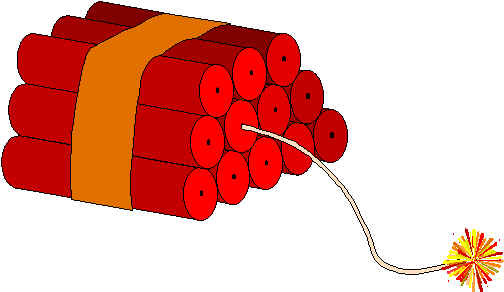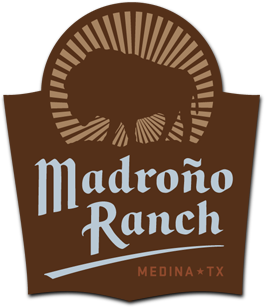
This summer in Central Texas has been extraordinary even by our hellish standards. Yesterday the official state climatologist (did you even know we had one of those?), John Nielsen-Gammon, reported that July 2011 was the hottest month in Texas since we began keeping records in 1895. The historical average of days per year with triple-digit temperatures at Camp Mabry, just up the hill from our house in Austin, is 12; two years ago we fell one short of the record of 69, set in 1925. But yesterday marked the fifty-first day this year (and the nineteenth in a row) at or above 100, and the 107 recorded at Camp Mabry was a record high for the date. Since we are just barely into August, I’d say we have an excellent chance of finally breaking that 69-day record this year. Go team!
Even more distressing than the heat, though, is the drought. (Was it really only last September that heavy rains drenched most of the state?) Yesterday Nielsen-Gammon announced that we are now in the midst of our worst one-year drought ever, though yesterday was also the day that the Austin American-Statesman ran a story with the headline “Current drought pales in comparison with 1950s ‘drought of record,’” which was apparently supposed to be reassuring.
The story, by Farzad Mashhood, argues that the 1947–57 drought in Texas, which one state official called “the most costly and one of the most devastating droughts in 600 years,” was worse than our current drought. Robert Mace, the deputy executive administrator of the Texas Water Development Board, told Mashhood, “The drought we’re in is severe, but it ain’t your grandpa’s drought.”
I guess this too is supposed to make us feel better, but Mashhood goes on to note that the current drought “has surpassed the 1950s drought in two of three key areas,” and that the period from October 2010 through June 2011, during which 10.97 inches of rain fell at Camp Mabry, as opposed to the average 25.53 inches, is the driest on record. And then, toward the end of the story, Mashhood tosses in this little gem: “There’s no way to tell how long this drought will last, but meteorologists are seeing signs that another La Niña is building and are predicting another dry year in 2012.”
I think that’s the one that really got me. How the hell can you write almost 1,200 words arguing that the 1947–57 drought was worse when you don’t know how long the current drought will last?
Even if the experts are wrong about next year, the long-term prognosis is grim. According to the Texas Drought Project, “climatologists who have studied both the history and the computer models on Texas rainfall have concluded that the state is headed for a very long period—possibly marked in hundreds of years—wherein rainfall continues to decrease, and more of the state becomes desert-like….”
Having read Tim Egan’s The Worst Hard Time: The Untold Story of Those Who Survived the Great American Dust Bowl, I am not particularly excited about the prospect of desertification. In his remarkable book Egan quotes Hugh Hammond Bennett, the iconoclastic soil conservation pioneer, who believed that “we Americans have been the greatest destroyers of land of any race of people barbaric or civilized.”
A few years later another far-sighted thinker, Aldo Leopold, wrote at the very beginning of his seminal A Sand County Almanac, one of the Ur-texts of American conservation, that
We abuse land because we see it as a commodity belonging to us. When we see land as a community to which we belong, we may begin to use it with love and respect…. That land is a community is the basic concept of ecology, but that land is to be loved and respected is an extension of ethics.
Of course we’ve learned a lot about soil conservation, and conservation in general, in the decades since Bennett and Leopold issued their gloomy pronouncements. But have we really changed our essential attitude toward the land? Treating the land (and water, and air) with love and respect may be “an extension of ethics,” as Leopold wrote, but it is also a precondition of our survival. As the artist Mark Dion put it:
We have a test ahead of us, in terms of our relationship to the natural world. If we pass the test we get to keep the planet.
One of my favorite bits of Texas trivia involves C. W. Post, the Michigan cereal manufacturer who gave the world Post Toasties and Grape-Nuts. In 1906, hoping to start a Utopian farming community in Texas, he bought 225,000 acres in Garza and Lynn counties and established the town of Post City, now known as Post, the seat of Garza County.
Beginning in 1910, having noticed that rain was a scarce but precious commodity on the High Plains, Post embarked on a long and costly experiment which involved setting up firing stations along the Caprock and detonating dynamite charges at carefully measured intervals for several hours at a time. Four years and thousands of dollars later, Post, who had suffered two nervous breakdowns as a young man and who was in declining health, finally gave up. In May 1914, he died of a self-inflicted gunshot wound at his home in Santa Barbara, California.
I’ve been thinking about Post, and also about Robert St. George Dyrenforth (who used explosive balloons and artillery in an unsuccessful attempt to bring rain to Midland in 1891), as this hot, dry, punishing summer drags on. Their efforts testify to the importance of rain, and to the credulity of humankind, especially where something we want and need so badly is involved. A century later, we scoff at the “concussion theory” of weather modification, as we do at the earlier belief that “rain follows the plow.”
Then again, desperate times call for desperate measures. If the experts are right about La Niña, you may soon be hearing a series of loud booms echoing from the Madroño hills.
What we’re reading
Heather: Mary Doria Russell, Doc
Martin: Amanda Eyre Ward, Close Your Eyes

Yikes. I’m curious – what are the three key areas that measure drought? And what is it with utopian cereal makers? Up here in Michigan we have Kellogg, the breakfast company founded on the principles of the Kellogg brothers, which included eugenics, yogurt enemas and the quackery portrayed in “The Road to Wellville.” Thanks for another great blog post, and good luck with the heat!
Thanks, Brad. As I understand it, the three measures, at least in Central Texas, are 1) 24 consecutive months of lakes Travis and Buchanan being below normal levels, 2) lake inflows below 1950s levels, and 3) less than 600,000 acre-feet of water in Travis and Buchanan. We’ve already hit the first two (the lakes haven’t been full since February ’05, and the average inflows during the first six months of this year were 30 percent of the average inflows in the ’50s), but the lakes currently hold almost a million acre-feet, and are expected to remain above the minimum for the rest of the year.
And apparently Post was inspired to enter the cereal business after spending some time at Kellogg’s sanitarium in Battle Creek following his second breakdown, in 1891. Must be something in the water (or the yogurt) up there. So when are y’all going to start marketing your own granola?
Just in terms of the temperatures, I don’t see anything to worry about. This is Central Texas, after all. For perspective:
http://stevengoddard.wordpress.com/2011/08/07/year-to-date-in-texas/
http://tinyurl.com/3f7cjtw
The temperatures aren’t really the point, though; the drought is.
Well, temperatures were mentioned, so I assume they are relevant.
But, as I like to say, there is a reason that cactus grows in Central Texas, and a reason, too, that washes cover the landscape. Feast or famine, when it comes to water in these parts, is absolutely normal. Using a precipitation record that is only about a century and a half old, when discussing climate and “climate change,” is, perhaps, misleading, though.
Weather and climate did not used to be gentle and predictable, least of all in the piece of land now described as the American Southwest. Those of us living in Texas in the 21st century, indeed, are blessed when it comes to precipitation and climate. Things have been far worse in the not-so-distant past, unless you like “megadroughts”:
http://tinyurl.com/4h5hvo2